Top 10 Exercises to Stay Fit After 50
Discover the top 10 exercises that can help you stay fit after 50 and keep you healthy. Explore essential fitness tips for over 50 to maintain your strength, flexibility, and overall well-being.
FITNESS
Her Next Chapter
1/14/20259 min read


Embracing Fitness After 50
As individuals transition into their 50s and beyond, the importance of maintaining physical fitness becomes increasingly evident. Regular exercise is not merely a suggestion; it emerges as a fundamental aspect of preserving health and enhancing overall well-being. At this stage of life, one can experience a myriad of benefits through consistent physical activity, which caters to physical but also mental and emotional health.
One of the most notable advantages of staying active after 50 is improving health markers. Regular exercise has been linked to lower risks of chronic diseases such as heart disease, diabetes, and obesity. By incorporating fitness into daily routines, individuals can bolster their immune systems and enhance cardiovascular health, which is vital for longevity. Moreover, maintaining a regular exercise regimen can lead to improved mobility and flexibility, enabling individuals to engage actively in their daily lives with ease and confidence.
Another key benefit of physical fitness in this age group is the positive impact on mood and mental clarity. Exercise is known to release endorphins, which are natural mood lifters. By participating in various forms of physical activity, individuals can combat feelings of stress and depression, often experienced during these life transitions. Furthermore, fitness activities encourage social interaction, providing opportunities to connect with others who share similar interests, thereby fostering a sense of community and belonging.
Ultimately, embracing fitness after 50 presents an opportunity for personal growth and vitality. Integrating regular exercise into one’s lifestyle is not just about aesthetics but about enhancing one’s quality of life. By taking proactive steps towards fitness, individuals can look forward to a healthier, happier future filled with energy and purpose.
The Importance of Strength Training
As individuals age, particularly women over the age of 50, maintaining physical health and well-being becomes increasingly important. One of the most effective ways to achieve this is through strength training. Strength training not only helps in building muscle mass but is also essential for preserving it. After 50, a natural decline in muscle mass occurs, a process known as sarcopenia. Engaging in regular strength training can help combat this deterioration, enabling women to maintain a healthy and active lifestyle.
In addition to muscle preservation, strength training plays a critical role in improving bone density. Women face an elevated risk of osteoporosis post-menopause due to decreased estrogen levels, which significantly impacts bone health. Incorporating weight-bearing exercises into a fitness routine fosters bone strength, thereby mitigating the risk of fractures and enhancing overall skeletal health. Resistance exercises, such as weight lifting or resistance band workouts, can be tailored to fit individual capabilities and preferences, ensuring an age-appropriate approach.
Another notable benefit of strength training for women over 50 is the reduction of fall risk. As balance and coordination can decline with age, commitment to strength exercises can enhance muscular strength and stability. This is crucial for preventing falls—one of the leading causes of serious injuries among older adults. Simple exercises, such as squats or modified push-ups, can bolster leg and core strength, contributing to overall balance and functional mobility.
To safely incorporate strength training into a fitness routine, it is advisable to start with light weights and gradually increase intensity. Seeking guidance from a qualified fitness professional can provide valuable insights and minimize the risk of injury. Establishing a consistent schedule that includes strength training at least twice a week can lead to improved health outcomes and a greater quality of life.
Cardio Workouts: Getting Your Heart Pumping
Engaging in regular cardiovascular exercise is vital for maintaining heart health, particularly for women over 50. As the body undergoes various changes with age, it becomes increasingly important to incorporate activities that enhance cardiovascular fitness. Simple yet effective workouts such as walking, swimming, and cycling can be particularly beneficial in promoting stamina and energy levels.
Walking is one of the most accessible forms of cardiovascular exercise. It requires no special equipment and can be easily integrated into daily routines. For women over 50, brisk walking can elevate the heart rate, improve circulation, and help manage weight. By making walking a daily habit, individuals can notice an enhancement in their overall mood and energy throughout the day.
Swimming is another excellent choice for cardiovascular fitness. It provides a full-body workout while being gentle on the joints, which is especially crucial as women age and may experience increased joint stiffness or discomfort. The water supports the body, reducing the risk of injury while effectively increasing heart rate and endurance. Regular swimming sessions can promote muscle strength, flexibility, and cardiovascular health.
Cycling, whether stationary or outdoor, also stands out as a beneficial cardio workout. It not only helps improve cardiovascular endurance but is also easy on the joints. Cycling can be tailored to individual fitness levels, making it a sustainable option for enhancing stamina as one grows older. Engaging in cycling regularly provides an enjoyable way to boost heart health while exploring the outdoors.
Incorporating these cardio workouts into a weekly routine can significantly contribute to enhancing cardiovascular health, ultimately fostering a more active and happier lifestyle. By prioritizing such activities, women over 50 can ensure their hearts remain strong and resilient as they navigate through this stage of life.
Flexibility and Balance: Essential Elements of Fitness
As individuals age, the importance of flexibility and balance exercises becomes increasingly evident. Incorporating activities such as yoga and Pilates into one’s fitness routine can significantly enhance physical well-being, particularly for women over the age of 50. These forms of exercise focus on stretching and strengthening muscles, which not only improves the range of motion but also aids in maintaining mobility.
Flexibility is crucial for promoting joint health and alleviating stiffness that often results from a sedentary lifestyle. Engaging in regular stretching routines can assist in reducing muscle tension and enhancing overall movement efficiency. Additionally, improved flexibility allows for better posture, which is vital for reducing discomfort and preventing chronic pain in older adults. Activities like yoga, which incorporate a variety of stretches, can also promote relaxation and mental clarity.
Balance, on the other hand, is essential for reducing the risk of falls—a significant concern for older adults. Exercises that challenge coordination and stability help to strengthen the core muscles and train the body to maintain equilibrium in various positions. Pilates is particularly effective in this regard, as it emphasizes controlled movements and the alignment of the body. By focusing on core strength, Pilates practitioners can develop a solid foundation that contributes to improved balance.
The cumulative impact of incorporating flexibility and balance exercises into a fitness regimen is profound. Not only do these activities contribute to overall well-being, but they also promote independence in daily activities, allowing individuals to engage in life with confidence. As part of a comprehensive approach to fitness, prioritizing flexibility and balance is vital for women over 50 looking to enhance their quality of life. In summary, embracing these modalities will undoubtedly support health and vitality during this stage of life.
Top 10 Recommended Exercises for Women Over 50
Engaging in regular physical activity is vital for women over 50, as it promotes overall health and well-being. Here are ten recommended exercises that provide a balanced mix of strength, cardio, and flexibility workouts tailored for this age group.
1. Walking: A simple yet effective exercise, walking enhances cardiovascular health and aids in weight management. Aim for 30 minutes most days, and ensure to wear supportive shoes to protect your joints.
2. Swimming: This low-impact exercise is excellent for improving cardiovascular fitness while being gentle on the joints. Swimming laps or participating in water aerobics can effectively build strength and stamina.
3. Yoga: Practicing yoga enhances flexibility, balance, and mental wellness. Look for classes specifically geared toward seniors to ensure the poses are safe and accommodating for all skill levels.
4. Strength Training: Incorporating light weights or resistance bands can prevent muscle loss and increase bone density. Focus on major muscle groups, aiming for two to three sessions per week on non-consecutive days.
5. Tai Chi: This ancient martial art combines gentle movements and deep breathing, promoting balance and reducing stress. It is particularly beneficial for improving stability and preventing falls.
6. Pilates: Pilates focuses on core strength, flexibility, and posture. Many classes offer modifications for all fitness levels, making it accessible for women over 50.
7. Cycling: Whether on a stationary bike or cycling outdoors, this low-impact exercise improves cardiovascular health while preserving joint integrity. Aim for 30 minutes, gradually increasing intensity.
8. Bodyweight Exercises: Movements such as squats, lunges, and modified push-ups build strength without the need for equipment. Start with one set of 10-15 repetitions, emphasizing proper form.
9. Dancing: Dance-based classes are an enjoyable way to boost heart health and improve coordination. Look for local classes that cater to various skill levels and preferences.
10. Gardening: Not only is gardening a fulfilling hobby, but it also incorporates various physical activities such as bending, lifting, and stretching, all of which contribute to fitness.
These exercises collectively support a healthier lifestyle and can enhance the quality of life for women over 50. Always consult a healthcare professional before starting a new exercise regimen to ensure safety and appropriateness.
Creating a Balanced Workout Routine
Establishing a balanced workout routine is crucial for individuals over 50, as it encompasses a variety of exercises tailored to enhance overall fitness and well-being. A comprehensive fitness program should ideally include strength training, cardiovascular activities, and flexibility exercises. Each of these components contributes uniquely to maintaining health, mobility, and independence.
Strength training is particularly important as it helps combat muscle loss associated with ageing. Engaging in resistance exercises two to three times a week can improve muscle mass and bone density, reducing the risk of osteoporosis. Exercises such as bodyweight squats, resistance band workouts, and light weightlifting should be incorporated to enhance strength effectively.
Cardiovascular exercises are essential for heart health and overall stamina. Activities like walking, swimming, or cycling can elevate heart rates and promote cardiovascular fitness. Aim for at least 150 minutes of moderate-intensity aerobic exercise each week to build endurance and improve circulation. It is advisable to choose enjoyable activities to encourage consistency and motivation.
Flexibility exercises, such as stretching or yoga, contribute to maintaining joint health and preventing injuries. Incorporating these activities into the routine assists in improving balance and coordination, which are vital for preventing falls in later years. It is beneficial to dedicate time for stretching after each workout session to help maintain range of motion.
When creating a workout routine, setting realistic goals is essential. Consider personal fitness levels, preferences, and any existing health conditions. Scheduling workouts during a convenient time in the day ensures consistency, making it easier to establish exercise as a habit. Additionally, listening to one's body is paramount; if discomfort or pain arises, it is advisable to adjust the activity or consult a healthcare professional. By integrating these elements into daily life, fitness can become a sustainable and enjoyable aspect of living well beyond 50.
Staying Motivated and Overcoming Challenges
Maintaining an active lifestyle can be particularly challenging for women over 50, as various factors may impede their commitment to fitness. These factors often include time constraints, shifts in confidence, and physical limitations. However, there are effective strategies to help overcome these obstacles and sustain motivation.
First and foremost, managing time efficiently is crucial. With work responsibilities, family commitments, and various life demands, it can be difficult to find time for exercise. One approach is to integrate physical activity into daily routines. This may involve opting for a brisk walk while running errands or doing short workouts during breaks. Scheduled workouts need not be lengthy; even 20-30 minute sessions can be effective. Setting a specific time for workouts can also help create a routine that is easier to stick to.
Another significant challenge for women over 50 is a potential decline in confidence, especially with increasing awareness of one’s physical condition. It is beneficial to set achievable fitness goals that focus on gradual progression rather than immediate drastic changes. Celebrating small victories along the way can enhance motivation and provide a sense of accomplishment. These milestones could include completing a certain number of workouts per week, improving flexibility, or tracking strength gains.
Community support plays an integral role in sustaining motivation. Joining fitness classes, clubs, or online forums can connect individuals with others who share similar experiences. This camaraderie fosters encouragement and accountability, which can significantly boost one's commitment to staying fit. Sharing successes and challenges within a supportive community helps reinforce the idea that one is not alone on this journey. The combination of time management, setting achievable goals, and leveraging support systems can greatly empower women over 50 to succeed in their fitness endeavours.
Top 10 Exercises to Stay Fit After 50
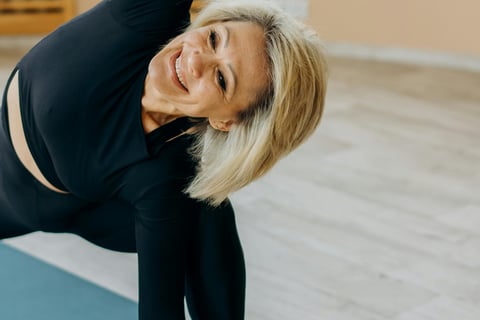

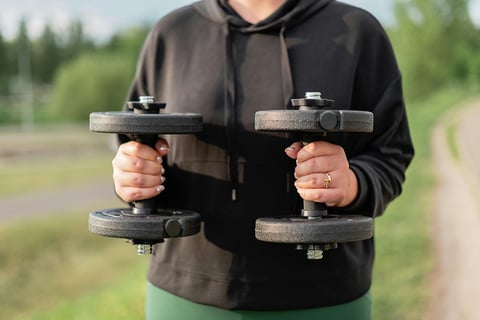

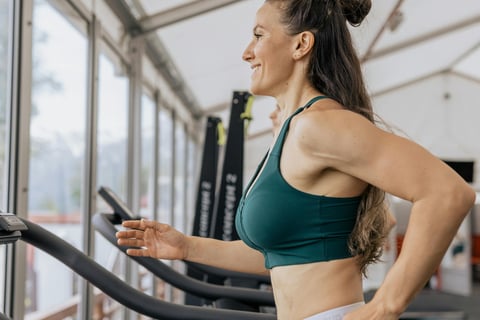

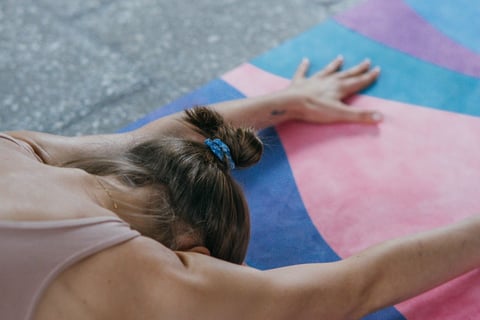



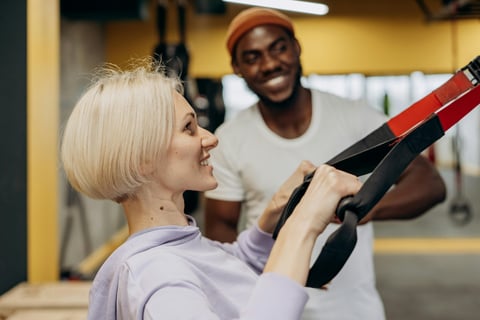

hernextchapter50@gmail.com
© 2025 Her Next Chapter. All rights reserved.
Disclosure: At "Her Next Chapter", we're committed to transparency and honesty with our readers. To support our growing business, we generate revenue through:
Sponsored posts: Clearly labelled at the beginning of each article. Affiliate Links: We may earn a small commission from purchases made through these links, at no extra cost to you.
We only feature products and services we genuinely believe in and use ourselves. This arrangement is between Her Next Chapter and our partners, ensuring you never pay more for recommended items. Your support through these channels allows us to continue creating valuable content and fostering our wonderful community. Thank you for being part of Her Next Chapter!

